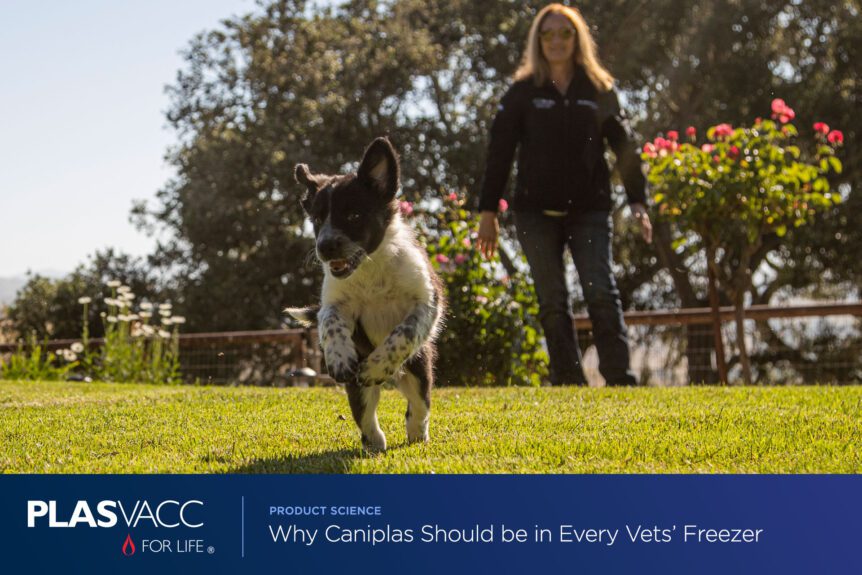The process of plasmapheresis has been a staple of modern medicine for nearly 60 years, enabling countless therapies across a wide variety of care disciplines. And while its introduction into veterinary standards of care took several more decades, the process was originally successfully proven all the way back in 1916 with a canine patient.
Today, the procedure has benefitted from well over a century of advancement and refinement, proving its safety and efficacy millions of times over, saving countless lives—both human and animal.
At Plasvacc, we rely on plasmapheresis to produce our life-saving Caniplas plasma.
Developed to aid in treating a variety of illnesses, Caniplas was the first-ever canine plasma treatment to receive government approval, with the APVMA granting it registered status in 2003.
While canine plasma treatments were previously available, vets often struggled to find reliable sources capable of providing the consistent quality and safety required.
A valuable tool aiding in treatment plans for a range of conditions from failure of passive transfer to parvovirus, Caniplas has a long track record of increasing positive outcomes while also shortening recovery times, making a strong case for warranting a spot in every veterinarian’s freezer.
“We’ve seen [Caniplas] bring dogs back to life, basically. I always refer to it myself as ‘life in a bag.’ It just has so many life-giving properties.”
—Dr. Brett Stone BVSc
As simple to administer as it is effective, Caniplas is sourced from carefully—and regularly—screened donors. It’s subject to strict quality controls throughout the collection process to ensure it’s free from any contaminants or pathogens, negating the need for cross-matching or testing before administering and allowing for quicker response times.
“We’ve moved from using Caniplas as a last resort, to using Caniplas as a first resort.”
—Dr. Rod Straw – BVSc, Dip ACVS, M(A)ANCVS ACVS
As witnessed by Plasvacc’s Canine Technical Veterinarian, Dr. Ryan Cate keeping plasma on-hand, “allows veterinarians—from a General Practitioner to ER hospital—to provide supportive care to their patients in a timely manner,” thus helping to increase the chances of favorable outcomes and helping to reduce patient recovery times.
Flash-frozen immediately after collection and carefully temperature-controlled through the delivery process, this allows Caniplas to maintain an impressive shelf life of 36 months without reduction in efficacy. Thus, care providers face little worry of product expiring before it’s needed, and even then, if a treatment is not used within its shelf-life, Plasvacc will happily replace the product free of charge.
So rather than the last line of defense against canine parvovirus or complications encountered in trauma situations and reserved for use in veterinary hospitals and emergency centers, Caniplas’ proven utility as part of comprehensive treatment of over 25 different indications makes it an essential tool in any veterinarian’s arsenal.

